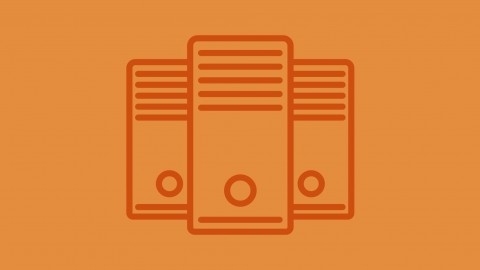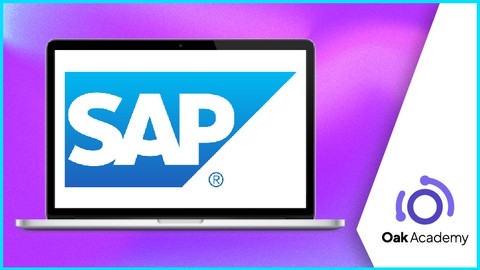SAP Netweaver Gateway is a powerful technology that allows you to integrate SAP applications with external systems, particularly web applications.
It provides a bridge for your SAP backend to communicate with frontend applications, enabling rich interactions and data exchange.
But finding the right course to master this complex technology can feel like searching for a needle in a haystack.
We understand the frustration of sifting through countless courses, trying to find the one that perfectly matches your learning style and goals.
You want a course that’s comprehensive, engaging, and taught by experts, leading you from beginner to expert in SAP Netweaver Gateway.
After researching and analyzing numerous courses on Udemy, we’ve identified the best course overall: SAP® Netweaver Gateway - Basics, Architecture and CRUD oData.
This course excels in its comprehensive approach, covering everything from the fundamentals of Gateway architecture to implementing CRUD operations through hands-on exercises.
It also integrates practical UI5 application development, giving you a holistic understanding of the entire integration process.
But that’s not all!
We’ve included a diverse selection of other excellent courses for different learning styles and preferences.
Whether you’re seeking a deep dive into specific aspects of SAP Netweaver, a practical introduction to ABAP development, or a comprehensive understanding of the SAP ecosystem, we’ve got you covered.
So, keep reading to discover the perfect course that will elevate your SAP Netweaver skills to new heights.
SAP® Netweaver Gateway - Basics, Architecture and CRUD oData
This course provides an in-depth understanding of SAP Netweaver Gateway and its integration with SAP UI5 applications.
You’ll start by learning the Gateway architecture and how UI5 applications interact with it.
The course covers the essential steps to create Gateway services, expose them, and test them.
You’ll dive into implementing CRUDQ (Create, Read, Update, Delete, Query) operations through hands-on exercises, building services from scratch.
The course guides you through creating a basic service and then explores each CRUDQ operation in detail, providing code examples along the way.
Once you’ve mastered the backend services, you’ll learn how to integrate them with a SAP UI5 frontend application.
You’ll set up a basic UI5 app, implement CRUD operations using oData methods, and see how to deploy the app to a live scenario, either embedded within an SAP ERP system or using the Hub model with a separate Gateway system.
The course also includes a bonus section on using SAP HANA XSJS as a Gateway for an IoT use case.
You’ll learn how to set up an IoT environment with sensors, Arduino, Raspberry Pi, and SAP HANA XSJS scripts to store and retrieve sensor data.
You’ll then build a UI5 app to display this data in near real-time.
Throughout the course, you’ll work with essential tools like Eclipse, SAP HANA XS, and Web IDE.
You’ll learn how to create HANA database schemas, procedures, and services, as well as develop UI5 applications using the Model View Controller pattern.
The course also covers deploying apps to Fiori Launchpad and using Git for version control.
SAP - SAP Basis and SAP Netweaver complete Training
This comprehensive course dives deep into the world of SAP Basis and SAP Netweaver, providing you with a strong foundation in core SAP concepts.
You’ll gain practical knowledge of essential elements like the SAP landscape and client management, crucial for any SAP professional.
Imagine mastering the intricacies of SAP’s client structure, understanding its client-based security, and confidently executing tasks like client copy and administration.
This course equips you with the skills to navigate these complex areas.
You’ll also learn how to create and manage users, ensuring seamless user access and management, and delve into the critical role of SAP web dispatcher, ensuring smooth application performance.
Beyond client management, you’ll explore essential SAP Basis tasks.
You’ll become proficient with SAP Snote, a powerful tool for managing system notes, and learn how to diagnose and troubleshoot common system issues using ABAP dumps and the SM21 system log.
You’ll gain practical knowledge of SAP security with SUIM, and learn how to manage and monitor user sessions for enhanced security.
The curriculum delves into transport management, teaching you how to utilize the STMS tool to effectively transport changes across different SAP systems.
You’ll master the process of importing, monitoring, and managing transports for seamless system updates.
Finally, you’ll explore database management, including BR tools, learn how to manage database tables and locks, and even understand the intricacies of print management and spooling.
This comprehensive approach ensures you have a complete understanding of the key functionalities and operations within the SAP environment.
SAP ABAP OData & NetWeaver Gateway Services
You’ll start with the fundamentals of OData, learning how this standard protocol enables efficient data exchange between applications.
You’ll then delve into the role of NetWeaver Gateway, a crucial component for facilitating communication between different systems.
Building upon this foundation, you’ll create your first OData Gateway project, a simple scenario designed to introduce you to the practical application of these concepts.
This project involves developing a sample OData service for a Fiori application, giving you hands-on experience with both the back-end and front-end development processes.
The course then guides you through the intricacies of OData service development, covering key aspects like data modeling, service implementation, and runtime management.
You’ll learn how to create data models using various methods, including DDIC import, manual creation, XML files, and RFC/BOR interfaces, giving you the flexibility to choose the approach that best suits your needs.
You’ll gain mastery over the core elements of ABAP OData development, mastering the implementation and management of service artifacts, including EntitySet methods.
You’ll also learn how to re-generate runtime artifacts and seamlessly integrate your OData service with the NetWeaver Gateway client.
This involves registering and maintaining the service, adding it to the FES Service Catalog, and understanding its path and URL/URI.
The course delves into advanced scenarios, such as association and navigation, enabling you to link different entities within your data model effectively.
You’ll also explore multi-level $expand scenarios, allowing you to retrieve data across multiple levels of your data model, a valuable skill for handling complex data structures.
Finally, you’ll gain expertise in the $batch request scenario, which lets you perform multiple operations in a single request.
This includes understanding how to execute POST, PUT, DELETE, and changeset operations within a batch request.
You’ll delve into the CHANGESET methods and learn how to implement the CHANGESET_PROCESS method for managing multiple update and delete operations efficiently.
This course offers a solid foundation for individuals seeking to master SAP OData and NetWeaver Gateway technologies.
Its comprehensive coverage of fundamental concepts, practical examples, and advanced scenarios will equip you with the skills necessary to build and manage robust data-driven applications within the SAP ecosystem.
SAP Netweaver ABAP Developer Edition Installation
You’ll begin by delving into the world of virtualization, learning how to install VirtualBox and its Extension Pack.
Then, you’ll download and install Ubuntu, the operating system used throughout the course.
The core of the course is, of course, the installation of SAP NetWeaver ABAP Developer Edition.
You’ll learn how to set up Java Runtime Environment, download the necessary files, and configure file sharing on your virtual machine.
The course guides you through the detailed process of installing SAP NetWeaver ABAP Developer Edition 7.50 SP02 and then installing SAPGUI, which you’ll use to access your SAP system.
You’ll gain a deep understanding of the SAP server, its basic information, and learn how to open and close services.
The course covers essential aspects like managing user access, renewing SAP licenses, and navigating the critical information needed for a successful installation.
Install SAP Netweaver AS ABAP Dev. Ed. 7.52SP4 on openSUSE
You’ll start by meeting Don Cortell, your instructor, who will lead you through the entire process.
The course emphasizes hands-on learning, and you’ll immediately begin by downloading and installing essential software: vmWare Workstation, openSUSE, and SAP Netweaver AS ABAP Dev. Ed.
You’ll learn how to create a virtual machine (VM) using vmWare Workstation, configuring its settings and installing openSUSE.
The course will then guide you through the installation of SAP Netweaver ABAP Dev. Ed., a crucial step in setting up your development environment.
You’ll also learn to install SAP GUI, a vital tool for interacting with your SAP system.
The course covers essential tasks like extracting and copying files, running installers, and adding your server to SAP GUI.
It also includes a bonus exercise that gives you an opportunity to test your skills by creating a “Hello World!” program.
This provides a practical introduction to SAP ABAP programming.
While the course focuses on practical skills, it would be beneficial to explore additional concepts related to SAP ABAP development.
The course could benefit from a more in-depth explanation of SAP GUI’s functionalities and features.
Additionally, incorporating real-world examples and scenarios would further enhance the learning experience.
However, supplementing the course with additional learning resources and further exploration of SAP ABAP development concepts would provide a more comprehensive learning experience.





